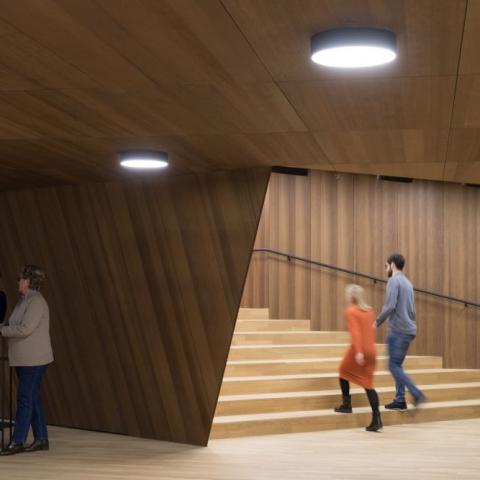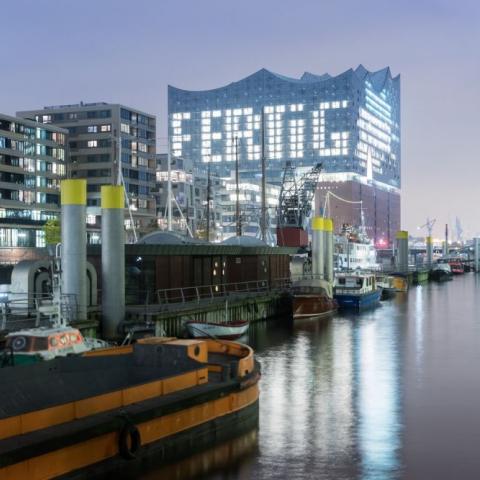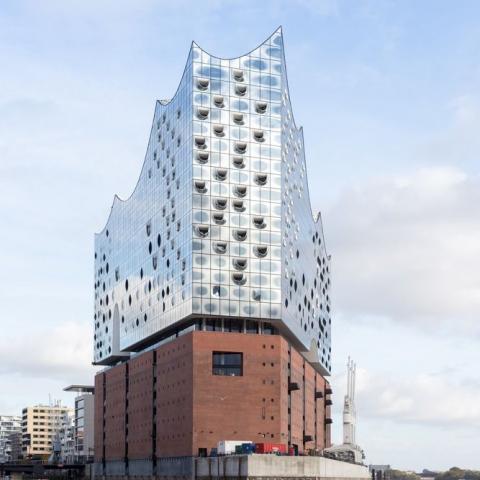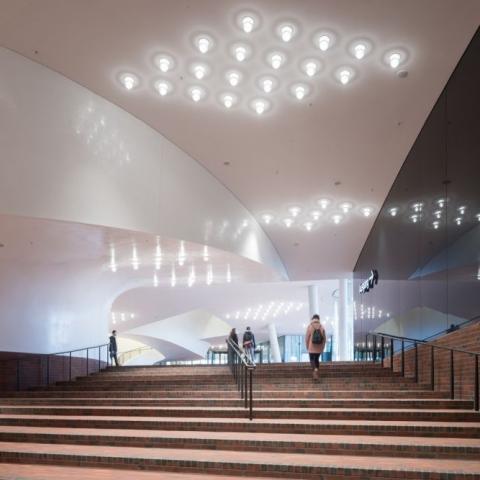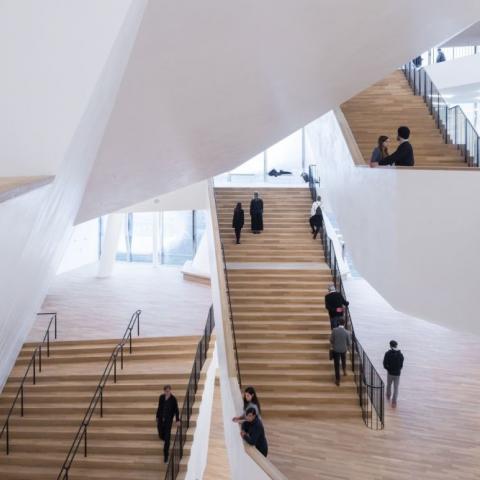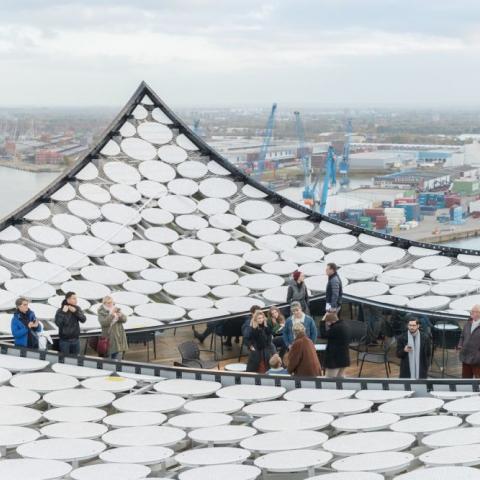Elbphilharmonie Hamburg / Herzog & de Meuron

Between Hanseatic Hub and HafenCity
The Elbphilharmonie on the Kaispeicher marks a location that most people in Hamburg know about but have never really noticed. It is now set to become a new centre of social, cultural and daily life for the people of Hamburg and for visitors from all over the world.
Too often a new cultural centre appears to cater to the privileged few. In order to make the new Philharmonic a genuinely public attraction, it is imperative to provide not only attractive architecture but also an attractive mix of urban uses. The building complex accommodates a philharmonic hall, a chamber music hall, restaurants, bars, a panorama terrace with views of Hamburg and the harbour, apartments, a hotel and parking facilities. These varied uses are combined in one building as they are in a city. And like a city, the two contradictory and superimposed architectures of the Kaispeicher and the Philharmonic ensure exciting, varied spatial sequences: on the one hand, the original and archaic feel of the Kaispeicher marked by its relationship to the harbour; on the other, the sumptuous, elegant world of the Philharmonic. In between, there is an expansive topography of public and private spaces, all differing in character and scale: the large terrace of the Kaispeicher, extending like a new public plaza, responds to the inwardly oriented world of the Philharmonic built above it.
The heart of the complex is the Elbphilharmonie itself. A space has emerged that foregrounds music listeners and music makers to such an extent that, together, they actually represent the architecture. The philharmonic building typology has undergone architectural reformulation that is exceptionally radical in its unprecedented emphasis on the proximity between artist and audience – almost like a football stadium.

Urban Architecture for Lovers of Culture
The new philharmonic is not just a site for music; it is a full-fledged residential and cultural complex. The concert hall, seating 2100, and the chamber music hall for 550 listeners are embedded in between luxury flats and a five-star hotel with built-in services such as restaurants, a health and fitness centre, conference facilities. Long a mute monument of the post-war era that occasionally hosted fringe events, the Kaispeicher A has now been transformed into a vibrant, international centre for music lovers, a magnet for both tourists and the business world. The Elbphilharmonie will become a landmark of the city of Hamburg and a beacon for all of Germany. It will vitalize the neighbourhood of the burgeoning HafenCity, ensuring that it is not merely a satellite of the venerable Hanseatic city but a new urban district in its own right.

The Archaic Kaispeicher
The Kaispeicher A, designed by Werner Kallmorgen, was constructed between 1963 and 1966 and used as a warehouse until close to the end of the last century. Originally built to bear the weight of thousands of heavy bags of cocoa beans, it now lends its solid construction to supporting the new Philharmonic. The structural potential and strength of the old building has been enlisted to bear the weight of the new mass resting on top of it.
Our interest in the warehouse lies not only in its unexploited structural potential but also in its architecture. The robust, almost aloof building provides a surprisingly ideal foundation for the new philharmonic hall. It seems to be part of the landscape and is not yet really part of the city, which has now finally pushed forward to this location. The harbour warehouses of the 19th century were designed to echo the vocabulary of the city’s historical façades: their windows, foundations, gables and various decorative elements are all in keeping with the architectural style of the time. Seen from the River Elbe, they were meant to blend in with the city’s skyline despite the fact that they were uninhabited storehouses that neither required nor invited the presence of light, air and sun.
....


